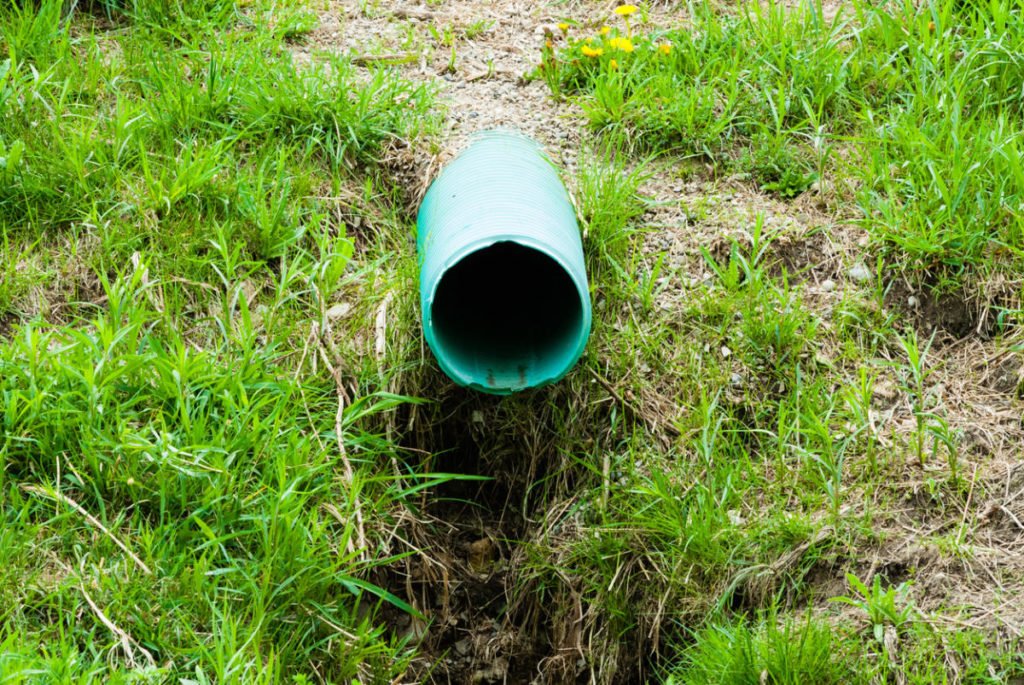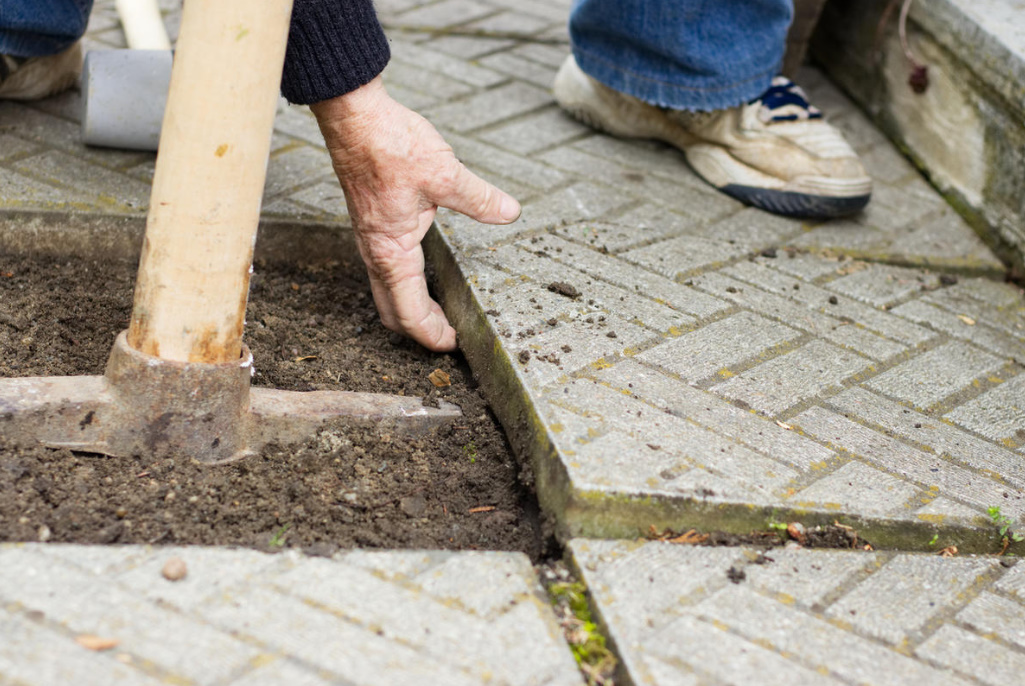If the cottage plot is located in a pit or areas with a depression, then in the rainy season it can become a real headache! None of us likes to splash in puddles. It is all the more hopeless to try to do anything with the slushy ground. But a swampy area is not a sentence.
There are many ways to do the drainage of the site with your own hands or entrust this matter to specialists. It all depends on the scale of the work and the location of your cottage plot. Many savvy gardeners independently make various drainage systems, quite successfully draining wetlands.
But if it were that simple, the drainage experts would be sitting around doing nothing. Because the classic scheme of a proper drainage system includes:
- network of air ducts and perforated pipes, buried at 1.8-2 m (6-6.5 ft);
- a system of sewer manholes, through which (in 15-20 years) it will be necessary to clean the channels with a jet of water supplied under high pressure;
- installation of special cable boxes with so-called “sand traps” that need to be regularly cleaned of various debris.
Perforated pipes are laid in a trench according to a certain technology: first, pebbles or gravel are poured into the bottom of the channel, then pipes are laid, installing hatches every 15-17 m (50-55 ft). Then the channels with pipes are filled with gravel or crushed stone and a layer of soil is poured on top. Moreover, the slope of the pipe should be 3-4 cm (1.2-1.6 inch) per meter (3.2 ft), and the pipes are usually packed in a special film or put in a gutter with a fine mesh, previously sprinkled with pebbles or gravel.
Before these works, a preliminary geodetic plan of the site is drawn up, where the highest and lowest points of the terrain are marked. And the drainage area goes according to the plan: from the highest point to the lowest.
Quite often, the drainage system of the site is a complex combination, since the terrain can be any. Sometimes the plot is located on a flat surface without a slope. In this case, to divert the main channel, a deep well was dug, the bottom and walls of which were reinforced and concreted with special supports.
And if the outlet of the main drainage pipe is located below the level of the prefabricated sewer manhole, dig another well, an intermediate one. As the main collection well is filled, water is pumped out of it by a pump.
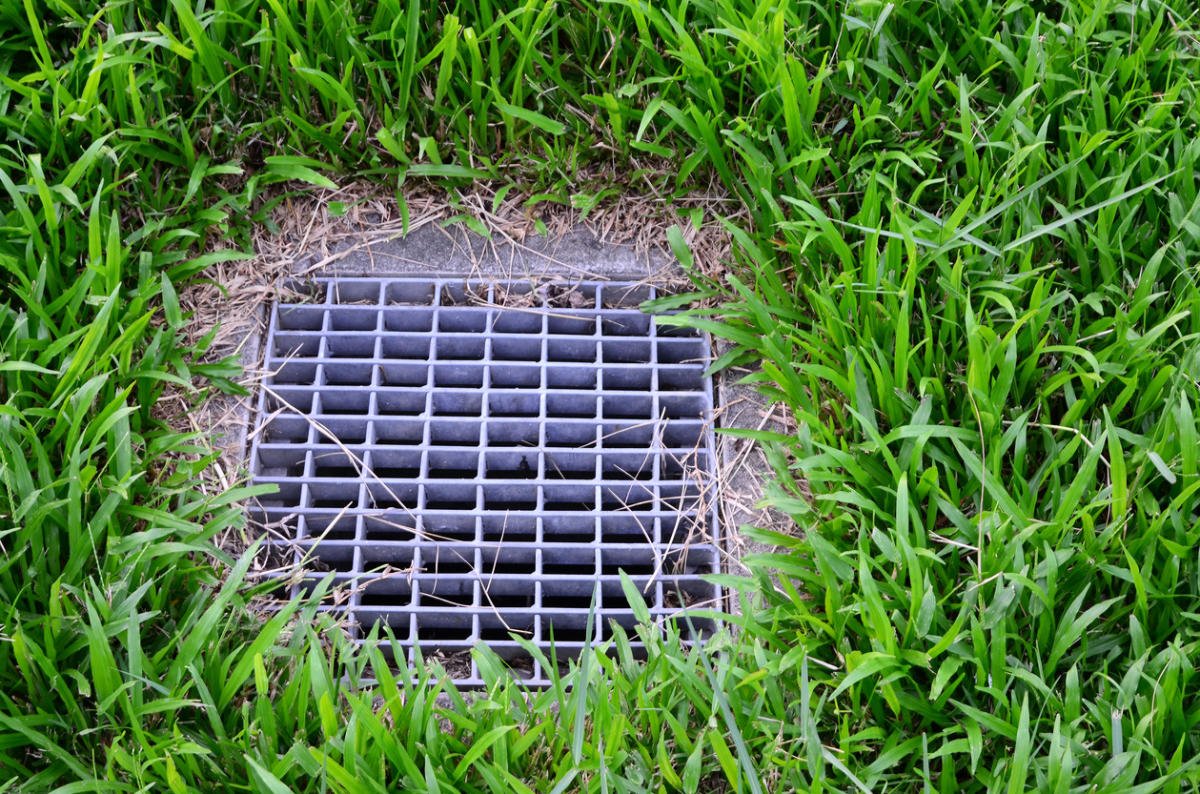
In order to save money, some gardeners use non-commercial perforated pipes for drainage, and old metal ones, drilling small holes and laying them in ditches, holes up. If the site is swampy, then you can conduct drainage ditches and without laying pipes, but simply fill up with gravel or pebbles.
We did a simple drainage, because in the rainy season we were so flooded and swampy that we simply could not walk without rubber boots.
From the previous owners, there was a small country house with several beds, like in a children’s town, and a lot of junk that needs to be put somewhere, and a large undeveloped wasteland (space for imagination). Thus, we decided that before improving the landscape of the area, we first need to arrange drainage ditches and put all sorts of junk in them.
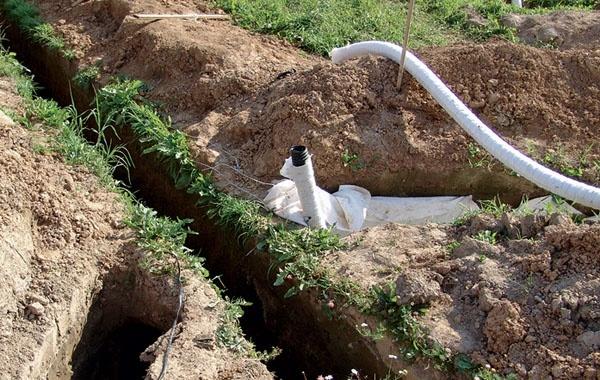
We checked the slope of the terrain in the old-fashioned way: in those places where (in our opinion) the surface went downhill, we dug the first small grooves, filled them with a water hose and looked in which direction the water flows. And, you know, we were a little bit wrong.
We slightly adjusted the direction of the branches and dug trenches in the intended places with a depth of about 1 m (3.2 ft) with access to a deep (2.5 m – 8.2 ft) well. For this work, we had to hire people, they also helped us to uproot the numerous stumps left by the previous owners.
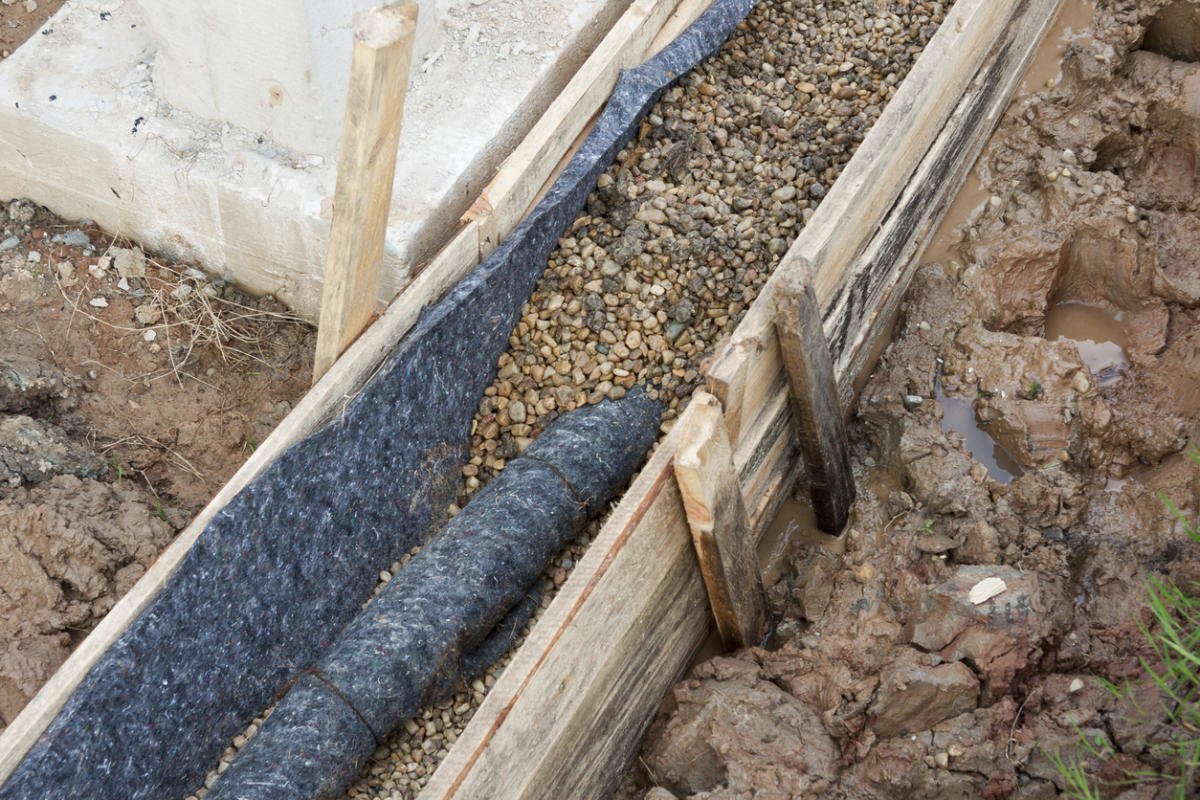
The trench, which we filled up with old stumps, branches, remnants of building materials and all the trash available in the country, including clothes and old toys. The excavated earth was raked into a trench, so that it rose slightly above the trench (later we planted honeysuckle, currant and broke several beds). The trench was filled up to the top with gravel, sand and carefully rammed.
On top of the moat was covered with wooden flooring, and paving slabs were laid on it. So we have light garden paths. Now, even in heavy rains on our trails, you can walk in shoes without getting your feet wet.
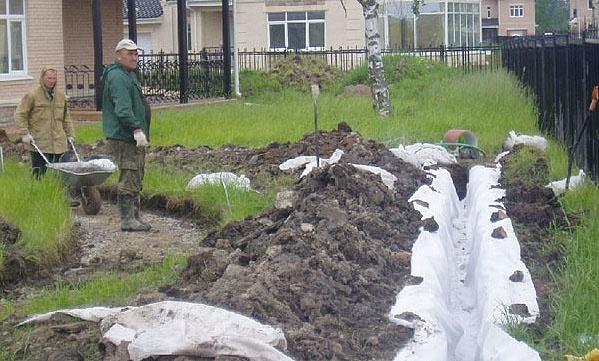
But we did not immediately think how to strengthen the sides of the paths, and they began to crumble. Without thinking twice, we went to get the remaining bricks from the repair of the house: we made the masonry sides in two layers. It turned out to be stable, but not very beautiful, and I planted a simple saxifrage along the rough brickwork – it turned out very beautiful! That’s how we did the drainage on our cottage plot and even along the beautiful garden paths.
As you can see, there are many nuances and subtleties in this difficult matter. We didn’t do much ourselves, hiring people from different organizations to help with the heavy work (digging and filling ditches, digging up stumps). So we can conclude that you can make your own drainage system by yourself, but if you want to make a really reliable, high-quality drainage system of the site, it is better to seek help from professionals.
